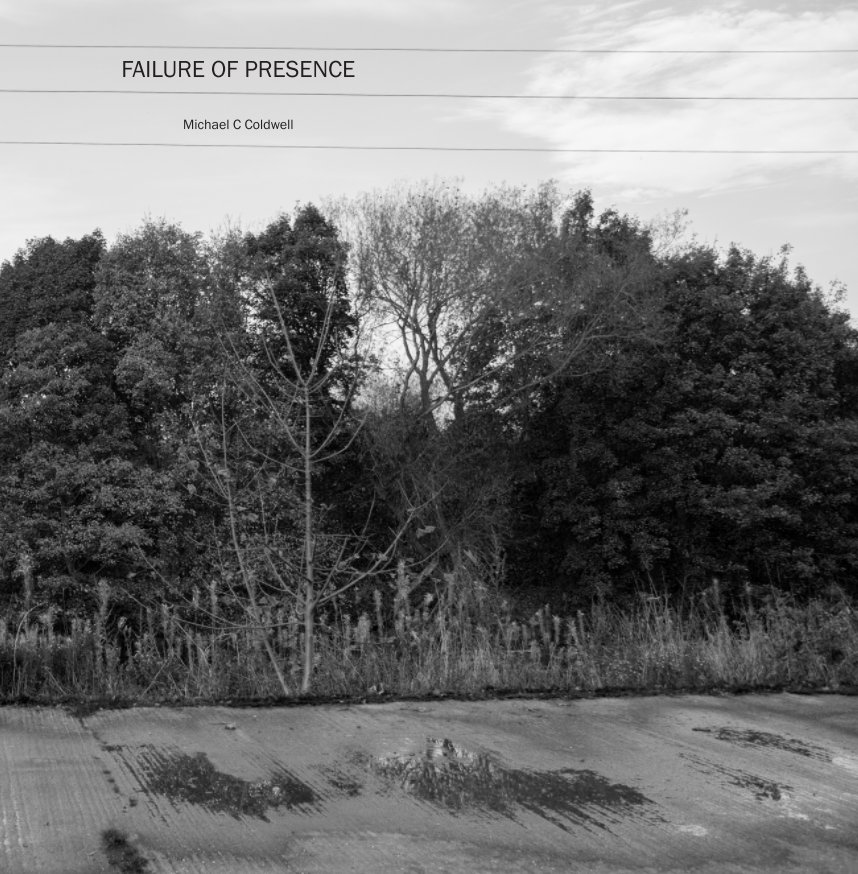Failure of Presence
de Michael C Coldwell
Este es el precio que tus clientes ven. Editar lista de precios
Acerca del libro
There is a profound eeriness to many “Man-altered Landscapes”, to reference the seminal New
Topographics exhibition. What haunts these spaces is a sort of failure – a strange absence of humanity, sometimes a literal one (ontological), sometimes a philosophical one (metaphysical), or a felt absence (phenomenological). These spaces are characterised by inhospitableness and the unhomely, by their emptiness and their strange familiarity. They are liminal non-places, routinely ignored by almost everyone, almost everywhere. They are both eerie and banal.
This work is dedicated to Mark Fisher, a great cultural theorist whose work has had a significant effect on my own, and who sadly passed away earlier this year. For Fisher the eerie could be characterised as a “failure of absence or by a failure of presence”. Something crucial seems to be missing and this disturbs us – the feeling of eeriness comes to us as if from nowhere, out of nothing. Fisher also thought that this perspective could “give access to the forces which govern mundane reality” – in detecting or revealing the eeriness in the banal, we break through the veneer of familiarity which allows them to go unnoticed, and we see these spaces as they really are, as outside of us, as inhumane and somehow alien. One such hidden force is capital, carving up the land and displacing people – these spaces are “the eerie underside of contemporary capital’s mundane gloss”.
People are not the only conspicuous absence in this work. The photograph itself is a failure of presence. It is a trace of reality, but a trace is not a real presence, it is an empty simulation of it. As Derrida put it “the trace is not a presence but is rather the simulacrum of a presence that dislocates, displaces and refers beyond itself” (Derrida, 1973). Photographs of such spaces are therefore ghosts of ghosts – they are hardly here at all.
Topographics exhibition. What haunts these spaces is a sort of failure – a strange absence of humanity, sometimes a literal one (ontological), sometimes a philosophical one (metaphysical), or a felt absence (phenomenological). These spaces are characterised by inhospitableness and the unhomely, by their emptiness and their strange familiarity. They are liminal non-places, routinely ignored by almost everyone, almost everywhere. They are both eerie and banal.
This work is dedicated to Mark Fisher, a great cultural theorist whose work has had a significant effect on my own, and who sadly passed away earlier this year. For Fisher the eerie could be characterised as a “failure of absence or by a failure of presence”. Something crucial seems to be missing and this disturbs us – the feeling of eeriness comes to us as if from nowhere, out of nothing. Fisher also thought that this perspective could “give access to the forces which govern mundane reality” – in detecting or revealing the eeriness in the banal, we break through the veneer of familiarity which allows them to go unnoticed, and we see these spaces as they really are, as outside of us, as inhumane and somehow alien. One such hidden force is capital, carving up the land and displacing people – these spaces are “the eerie underside of contemporary capital’s mundane gloss”.
People are not the only conspicuous absence in this work. The photograph itself is a failure of presence. It is a trace of reality, but a trace is not a real presence, it is an empty simulation of it. As Derrida put it “the trace is not a presence but is rather the simulacrum of a presence that dislocates, displaces and refers beyond itself” (Derrida, 1973). Photographs of such spaces are therefore ghosts of ghosts – they are hardly here at all.
Sitio web del autor
Características y detalles
- Categoría principal: Fotografía artística
-
Características: Cuadrado grande, 30×30 cm
N.º de páginas: 80 - Fecha de publicación: mar. 06, 2017
- Idioma English
- Palabras clave philosophy, ontology, landscape, eerie, photography, hauntology, trace, new topographics, yorkshire, industrial, dasein
Ver más
Acerca del creador
Michael C Coldwell
Leeds, UK
Artist working in photography, film and sound. Currently conducting research in media and communication at the University of Leeds, Coldwell's work investigates the philosophy of time, memory, spectrality and the changing urban environment, through interdisciplinary and experimental praxis. Coldwell also makes electronic music and art under the name Conflux Coldwell and as part of the Urban Exploration collective.


